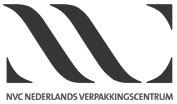SafeFoodPackDesign project: assessing reliable packaging for chemical-free food
To prevent molecules migrating from plastic packaging into the food they contain, scientists are identifying each critical point where this phenomenon can occur, using a method inspired from aeronautics. It is not obvious when examining a wrapped lettuce or a microwavable bowl of Chinese soup. But plastic food packaging is made of multiple layers designed to act as a barrier for oxygen or bacteria. Scientists have been addressing the issue of potentially harmful molecules such as anti-ultraviolet radiations, anti-oxydisers, glue and pigments from inks diffusing from one layer to the next in food packaging, susceptible to ultimately contaminate the food. This work has been performed under the SafeFoodPackDesign project, coordinated by Vitrac and funded by the French National Research Agency (ANR).
The SafeFoodPackDesign project goal is to build tools to help packaging manufacturers assess the diffusion risks of potentially harmful molecules, at every stage of the packaging’s life; from manufacturing to final use, including transport and storage. As an example, piling up plastic cups designed to hold, for example, Chinese soup, results in putting the inked external layer in contact with the inner layer of the cup immediately underneath. As a result, ink molecules migrate towards the inner layer, which will eventually be in contact with the food. In this case, the most critical step regarding chemical risk is with no doubt storage (News Article Food Ingredients First, 9 April 2013).

